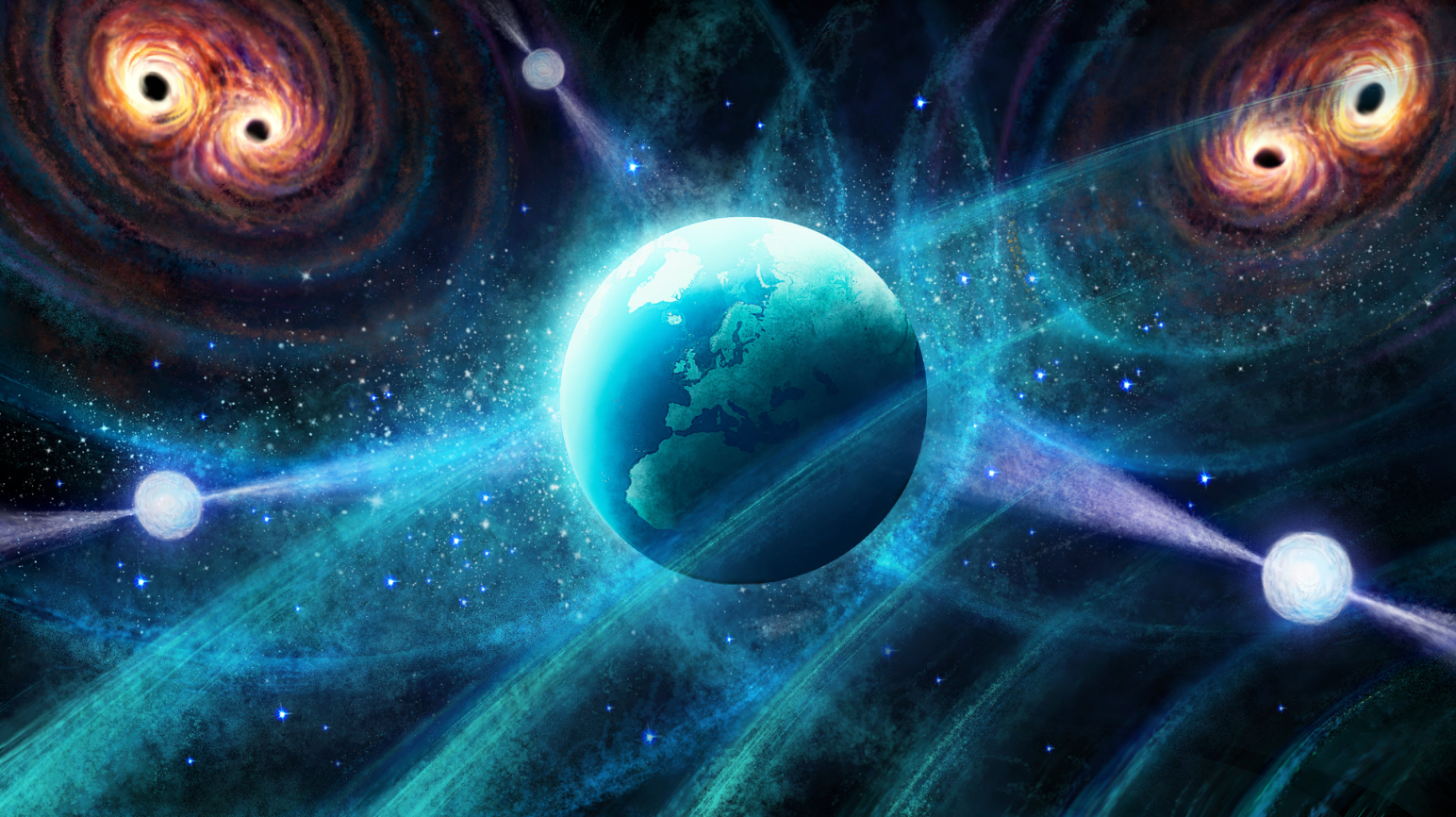In a groundbreaking discovery, astronomers have detected a rumbling “cosmic bass note” of gravitational waves thought to be produced by the slow-motion mergers of supermassive black holes across the universe.
Gravitational waves, first predicted by Albert Einstein a century ago, are ripples in the fabric of space-time caused by powerful cosmic events such as the merging of black holes. Until now, scientists have only been able to capture short “chirps” of gravitational waves linked to mergers of black holes or neutron stars only slightly larger than the sun. The latest observations tune into a far deeper frequency range, with a single complete wave, traveling at the speed of light, taking roughly 30 years to pass by Earth.
The detection was made possible by meticulously monitoring over 100 pulsars – exotic stars that spin hundreds of times each second, creating lighthouse-like beams of radio waves. These pulses are so stable that tiny changes in timing caused by the stretching and squeezing of the fabric of space can be detected.
Alberto Vecchio, a member of the European Pulsar Timing Array (EPTA), believes that this cosmic rumble is probably produced by the entire population of supermassive black hole binaries over roughly the past 8 billion years.
The likelihood of the latest results being due to chance is close to one in 10,000, making it compelling evidence, although it falls short of the one-in-a-million gold standard in physics for claiming evidence of a new phenomenon. Some uncertainty remains about the source of the gravitational waves. While supermassive black hole death spirals are viewed as the most plausible explanation, alternative possibilities, including a gravitational imprint left on the universe shortly after the big bang, are still on the table.
The findings confirm standard models of how the universe works, particularly in terms of supermassive black holes, and provide a tantalizing first glimpse into the population of these enigmatic celestial bodies. Priyamvada Natarajan, a member of the NANOGrav collaboration, notes that the findings “open a tantalizing new window the gravitational wave window, and offer a first glimpse into the population of supermassive black holes.
Future research by the NANOGrav project will seek to determine whether there are nearby merging supermassive black hole systems that can stand out above the gravitational wave background, and other events in the early universe creating gravitational waves, in addition to black holes.
































































